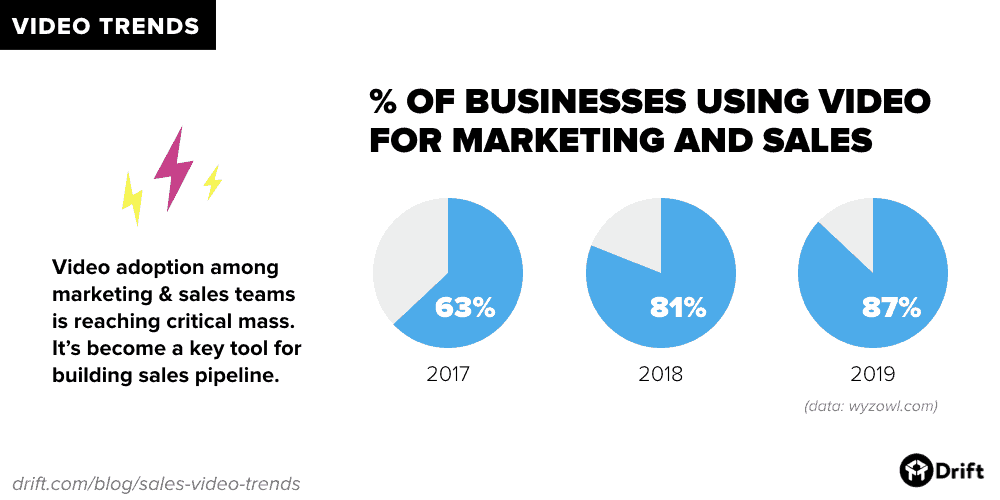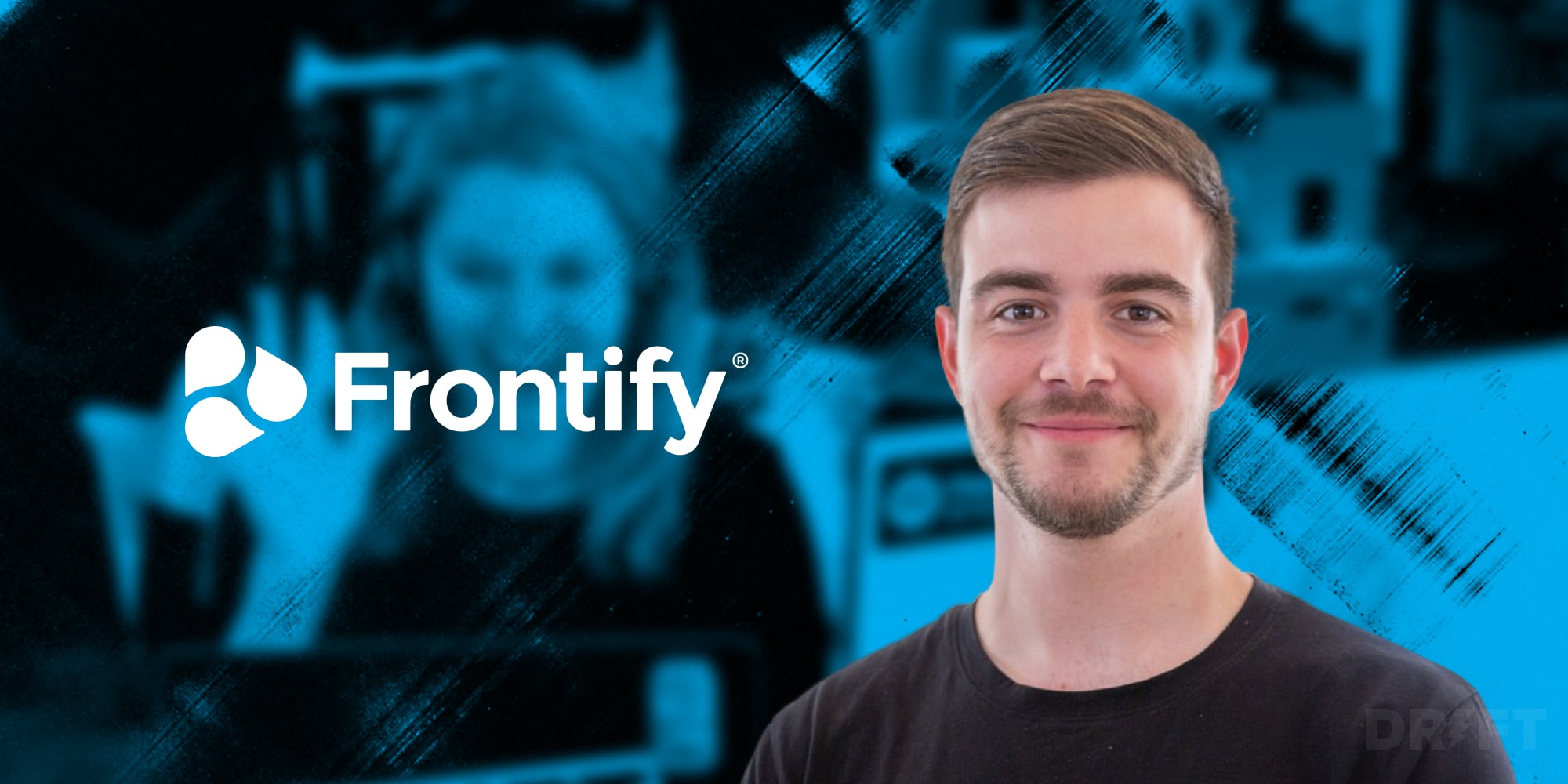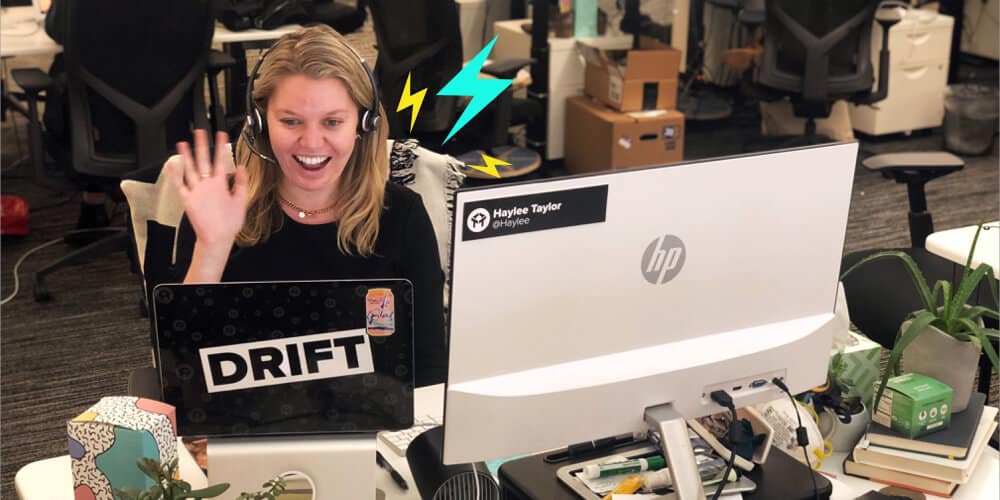
At 360Learning, our mission is to help companies close the gap between learning and business impact with our collaborative learning platform.
As we expand globally from Europe to the U.S., we knew we’d need a killer strategy. We’ve got a great product. We’ve got hundreds of logos from Fortune 500 companies. But to establish our presence as a European leader to a global leader, it’s not enough to be great. We have to be seen.
So…how do we stand out in a competitive and crowded market as a market challenger?
Here are some of the lessons I’ve learned as 360Learning’s VP of Marketing along the way – and how our team has made nearly 5,000 Drift Videos (with close to 6,000 views) in only one year.
From eLearning to Collaborative Learning
Before I get into our marketing strategy, it helps to understand what 360Learning does.
We offer companies a better way to train their teams. Our Collaborative Learning platform allows anyone to create, ship, and improve courses. We advocate a bottom-up approach to learning, one where your team decides what they want to learn, and makes it easy for them to learn from each other.
Instead of external instructors, you can leverage your best in-house experts. Instead of doing a tedious training needs analysis, you ask your team to declare their needs and upvote.
If you want your SDRs to come up to speed on a new sales pitch or your marketing team needs to learn more about copywriting from your best in-house experts – our platform gives you the tools to get it done. The use cases are endless, sales training, software training, onboarding, and leadership, etc. You can then track your training ROI directly in Salesforce.

By now you should see we’re all about doing things in a smarter way. We realized early on that there’s stiff competition for learning tools on U.S. soil. Customers not only expect a personalized experience – they demand it. We knew that the average sales strategy just wasn’t going to be enough to make our mark. We had to up our game.
Standing out in the U.S. Market
We realized we needed to do more to market ourselves as the best learning platform. So we narrowed our focus to a shortlist of industries with a big focus on tech companies. Then we started experimenting with conversational marketing.

Last year, we began to play around with Drift to generate more MQLs for our U.S. target market. At first…it was shaky. Our team wasn’t converting as many of these MQLs into SQLs as we wanted, and the numbers weren’t translating into people we could call customers.
But instead of giving up, we doubled down.
We took a look at why this was happening and found two reasons:
- Our conversations weren’t customized enough for what our audience wanted.
- Our message around our product and positioning wasn’t sharp enough.
It didn’t take long to devise a solution, something that would give our marketing strategy the one-two punch we knew we needed to succeed ? using chatbots and videos to make personalized connections with our leads.
Here’s what happened next ?
How Video Became Our Secret Weapon to Reach out to Customers
We recognized early on our messaging wasn’t as personal as it needed to be. I knew we needed a way to amplify our existing tactics, but I couldn’t land on the right solution.
The answer came to me in the form of (you guessed it) an email from a Drift sales rep in the spring of 2019. Right away the email caught my attention. There were a couple of lines of text and then a video with my name on it. I watched it immediately. I wanted a better way for my sales team to be able to engage with prospects, and this was the answer I’d been looking for! Next thing I knew, we signed on to become beta customers of Drift Video.
Instead of gradually boosting it across our touchpoints, we decided to implement Drift Video at almost any touchpoint we could. If we were following up with a lead on an email sequence, a sales call, or a product demo, we used Drift Video to do it.

Adding this level of personalization dramatically increased the quality of conversations we began to have with our prospects.
And on top of that, we managed to double the conversion rate from MQL to SQL.
These numbers gave our sales team a massive boost because it gave them the chance to have a positive impact on the leads coming into our funnel from the very first touchpoints, people who had a role in the buying process but more often than not weren’t the budget-wielding decision-makers in a company.
Using video enabled us to show value in a brand new way, answer questions quickly, build trust, and turn our buyers into advocates. So by the time the decision of whether or not to invest in our product reached the person in the company with the checkbook, the work was actually almost done. Our product was already viewed as the right solution for their business needs.
Our success with using video to win over customers seems to be following the trends that other sales and marketing teams are seeing. Since 2017, there has been a huge jump in the number of marketing and sales teams using video regularly, up to 87% from just 63%.
These numbers tell us that we’re on the right track – and that it’s only the beginning for video.
Starting Small Led to Big Results
When we launched our campaign to conquer the U.S. market, we did it with a (really) small army – a total of two BDRs.
After a two week period of our two BDRs using Drift Video to engage with prospects, the rest of the U.S. office caught on – and they told me they wanted in. We even used our 360Learning platform to create a course on how to use Drift for the rest of the team to speed up onboarding, and this eventually helped expand the use of the product across to our team back in France.

Now, our whole sales team in France, the UK, and the U.S. are using Drift Video – that’s 40 BDRs and AEs who are all bought in.
The reason I believe the use of video and conversational marketing has been so successful in our sales and marketing efforts is that we started small and the internal growth of BDRs using the tool was organic. Instead of making everyone on our team adopt brand new processes in a day, the push to move to video came from BDRs themselves.
Then after seeing first-hand how powerful the tools are, they thought hey…maybe we should let the rest of the team know that this approach is really working. Our reply rates moved from 3-4% to 10-12%, with half of the replies being generated by videos.
Fast forward one year, and (last I checked) our team has created 4,985 videos…with 5,726 views ?

Combining conversational marketing and video works for us because we didn’t expect it to work in every corner of our sales and marketing approach from day one. We’re not afraid to say that there were problems and bottlenecks we had to fix. Our prospects wanted us to be more personal, and we had to tighten our product messaging up. And because of the level of personalization video requires, we learned that it’s not a simple case of plugging a chatbot into the website and forgetting about it.
To succeed, you need to adopt a collective approach between your demand generation team and your sales development team. And staying true to my 360Learning roots, I’ll also add that for any solution you add to your stack, it’s imperative to train your team on how to use the tool and integrate it into their existing workflow. This can be done easily through peer learning – you can have one enthusiastic sales rep teach the others – or have your sales enablement manager formally train your reps to sure they use it correctly.
Our success is an example of the rewards of taking a collective approach. We now have more than 40 of our BDRs and AEs reaching out in the most personal way possible – using video.
And when you see results like doubling our MQL to SQL rates, my only question is…what are you waiting for?
Pierre Touzeau is the VP of Marketing at 360Learning.



